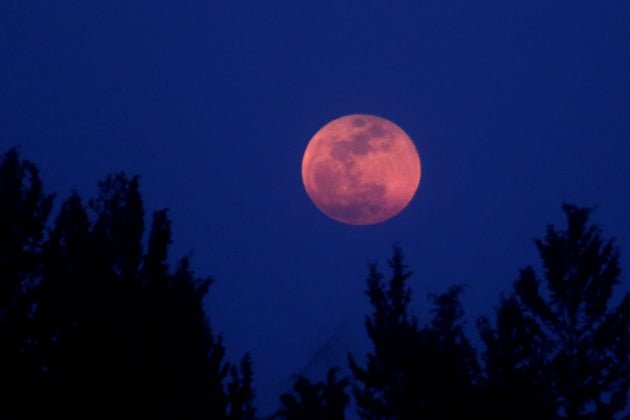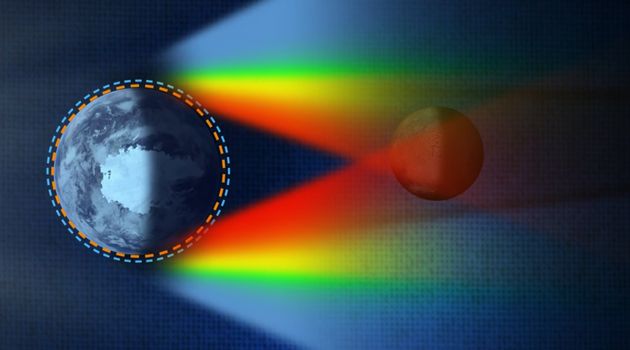The longest blood moon in 100 years is going to take place this Friday, giving stargazers and the general public the chance to see something pretty special.
Starting at around 9pm on Friday 27 July, people will be able to watch the Moon turn the colour of blood red in a phenomenon that usually takes place once every few years.
Blood moons may be fairly common, but the sheer duration of this spectacle will give the best chance yet of capturing the perfect photo.
To help make sure that you’re all set for the cosmic event, we got some tips from professional photographer and Canon ambassador David Noton.

1. Download the right apps
Forward planning is the best way to guarantee a great photograph, so David recommends getting prepared in the right way. “We no longer need to rely on weight tables to consult the behaviour of the moon,” explains Noton. “We can simply download an app on to our phone. The Photographer’s Ephemeris is useful for giving moonrise and moonset times, bearings and phases; while the PhotoPills app gives comprehensive information on the position of the moon in our sky.”
2. Use a tripod to capture the details
“As you frame up your shot, one thing will become immediately apparent; lunar tracking is incredibly challenging as the moon moves through the sky surprisingly quickly,” explains David. “Although it will be tempting to take the shot by hand, it’s important to remember that your subject is over 384,000km away from you and even with a high shutter speed, the slightest of movements will become exaggerated.”
3. Integrate the moon into your surrounding environment
While it might be tempting to focus only on the moon itself, David points out that some of the best pictures of our neighbour include planet Earth as a means of bringing us some perspective. “Personally, I’m far more drawn to using the lunar allure as an element in my landscapes, or using the moonlight as a light source.” Says Noton. “The latter is difficult, as the amount of light the moon reflects is tiny, whilst the lunar surface is so bright by comparison.”
4. Master the shutter speed and you’ll master the shot
“The most evocative and genuine use of the moon in landscape portraits results from situations when the light on the moon balances with the twilight in the surrounding sky,” says Noton. “Such images have a subtle appeal, mood and believability.”
He adds: “By definition, any scene incorporating a medium or wide-angle view is going to render the moon as a tiny pin prick of light, but its presence will still be felt. Our eyes naturally gravitate to it, however insignificant it may seem. Of course, the issue of shutter speed is always there; too slow an exposure and all we’ll see is an unsightly lunar streak, even with a wide-angle lens.”
Noton’s solution to this is a simple one, whether you’re using a professional camera or the professional mode on your smartphone. “On a clear night, mastering the shutter speed of your camera is integral to capturing the moon – exposing at 1/250 sec @ f8 ISO 100 (depending on focal length) is what you’ll need to stop the motion from blurring.”
5. You CAN use a smartphone, but just manage your expectations
“The lunar eclipse and Blood Moon is a spectacle worth witnessing from a good location, even if you don’t have a DSLR camera or telephoto lens,” said Noton. “It is possible to capture the moon using a smartphone camera, but remember it’s over 384,000km away, so without a telephoto lens you won’t get the detailed image often anticipated.” As Noton points out, you can use the digital zoom to fill the frame, however it will drastically reduce the image quality.
What is a blood moon?
A blood moon is essentially another word for a total lunar eclipse. This happens when the Earth passes between the Sun and the Moon.
During complete totality (the moment when the Earth is completely obscuring the light from the Sun) the Moon will turn a deep orange colour.
The reason for this is that the only light reaching the Moon will have been passed through the Earth’s atmosphere. The Earth’s atmospheric composition will then greatly determine just how blood-coloured the Moon becomes.

What you’ll see during the whole phase of the lunar eclipse will be the Moon steadily getting darker and darker before it quickly turns a dark red colour.
Once it passes back out of the Earth’s shadow it’ll then switch back to being its normal colour and steadily increase in brightness again.
When is the blood moon?
In the UK, the blood moon will take place on the night of Friday the 27th July 2018.
It’s believed that the phenomenon will start at 8:49 pm and will carry on for around an hour and 23 minutes depending on how east you are in the UK.